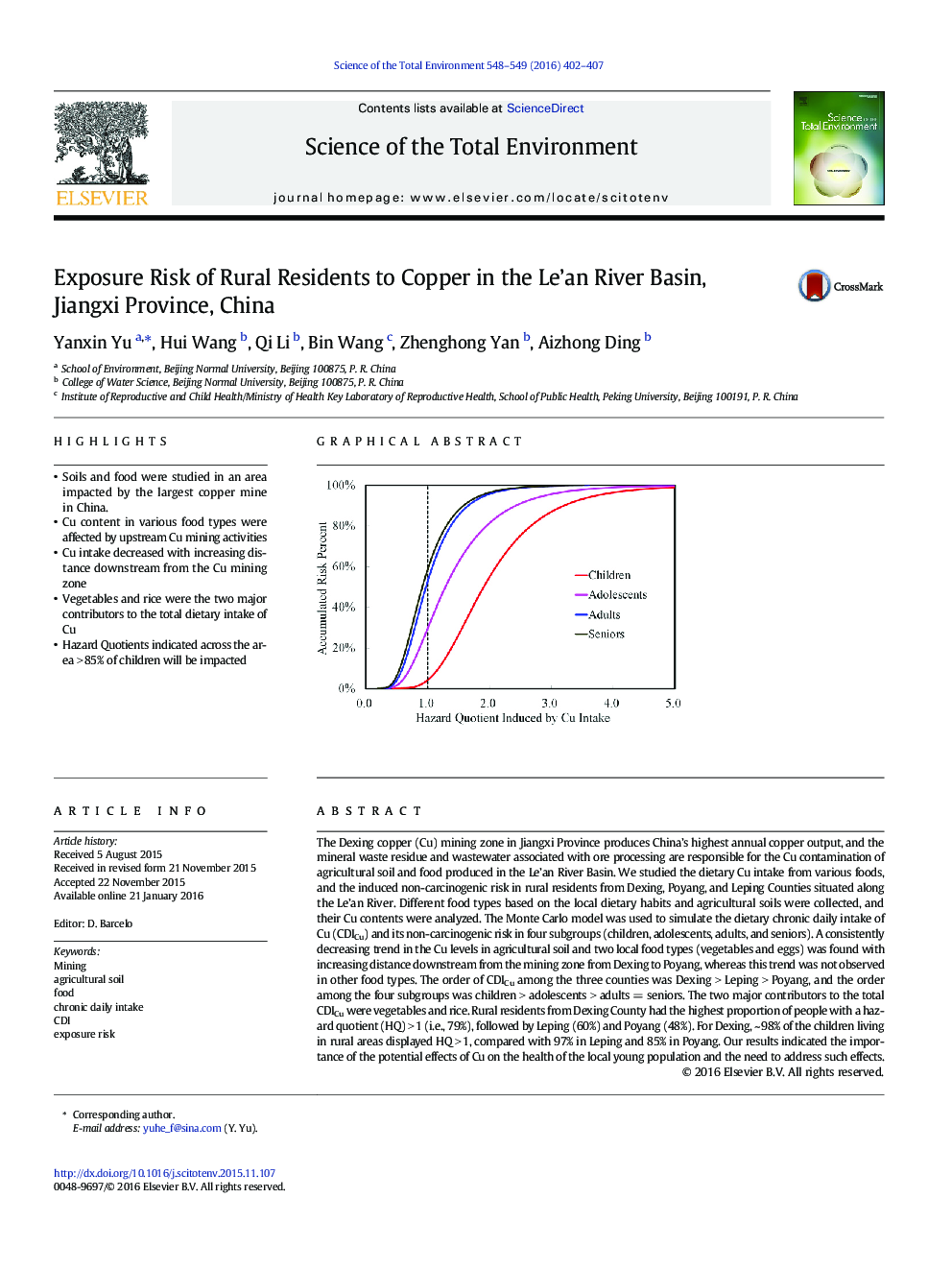| Article ID | Journal | Published Year | Pages | File Type |
|---|---|---|---|---|
| 6323362 | Science of The Total Environment | 2016 | 6 Pages |
â¢Soils and food were studied in an area impacted by the largest copper mine in China.â¢Cu content in various food types were affected by upstream Cu mining activitiesâ¢Cu intake decreased with increasing distance downstream from the Cu mining zoneâ¢Vegetables and rice were the two major contributors to the total dietary intake of Cuâ¢Hazard Quotients indicated across the area > 85% of children will be impacted
The Dexing copper (Cu) mining zone in Jiangxi Province produces China's highest annual copper output, and the mineral waste residue and wastewater associated with ore processing are responsible for the Cu contamination of agricultural soil and food produced in the Le'an River Basin. We studied the dietary Cu intake from various foods, and the induced non-carcinogenic risk in rural residents from Dexing, Poyang, and Leping Counties situated along the Le'an River. Different food types based on the local dietary habits and agricultural soils were collected, and their Cu contents were analyzed. The Monte Carlo model was used to simulate the dietary chronic daily intake of Cu (CDICu) and its non-carcinogenic risk in four subgroups (children, adolescents, adults, and seniors). A consistently decreasing trend in the Cu levels in agricultural soil and two local food types (vegetables and eggs) was found with increasing distance downstream from the mining zone from Dexing to Poyang, whereas this trend was not observed in other food types. The order of CDICu among the three counties was Dexing > Leping > Poyang, and the order among the four subgroups was children > adolescents > adults = seniors. The two major contributors to the total CDICu were vegetables and rice. Rural residents from Dexing County had the highest proportion of people with a hazard quotient (HQ) >Â 1 (i.e., 79%), followed by Leping (60%) and Poyang (48%). For Dexing, ~Â 98% of the children living in rural areas displayed HQ >Â 1, compared with 97% in Leping and 85% in Poyang. Our results indicated the importance of the potential effects of Cu on the health of the local young population and the need to address such effects.
Graphical abstractDownload high-res image (142KB)Download full-size image
